Welcome to the Art of Harmonious Living
Imagine walking into your home and immediately feeling a sense of peace, balance, and positive energy flowing through every room. Picture spaces that not only look beautiful but actually support your well-being, enhance your relationships, and attract abundance into your life. This isn’t just a dream, it’s the promise of feng shui, an ancient Chinese practice that has been creating harmonious living spaces for over 3,000 years.
Feng shui, which literally translates to “wind and water,” is the art and science of arranging your environment to promote the optimal flow of energy, or “chi.” While it may seem mystical or complex at first glance, feng shui is actually a practical system based on careful observation of how our surroundings affect our physical, emotional, and spiritual well-being.
In our modern world, where stress levels are high and many of us spend the majority of our time indoors, creating a harmonious home environment has never been more important. Your living space directly impacts your mood, productivity, relationships, and overall quality of life. When your home is arranged according to feng shui principles, it becomes more than just a place to live, it becomes a powerful tool for personal transformation and success.
This comprehensive guide will introduce you to the fundamental principles of feng shui and show you how to apply them in every room of your home. Whether you’re a complete beginner or someone who’s dabbled in feng shui before, you’ll discover practical, actionable techniques that you can implement immediately to create more harmony, balance, and positive energy in your living space.
Table of Contents
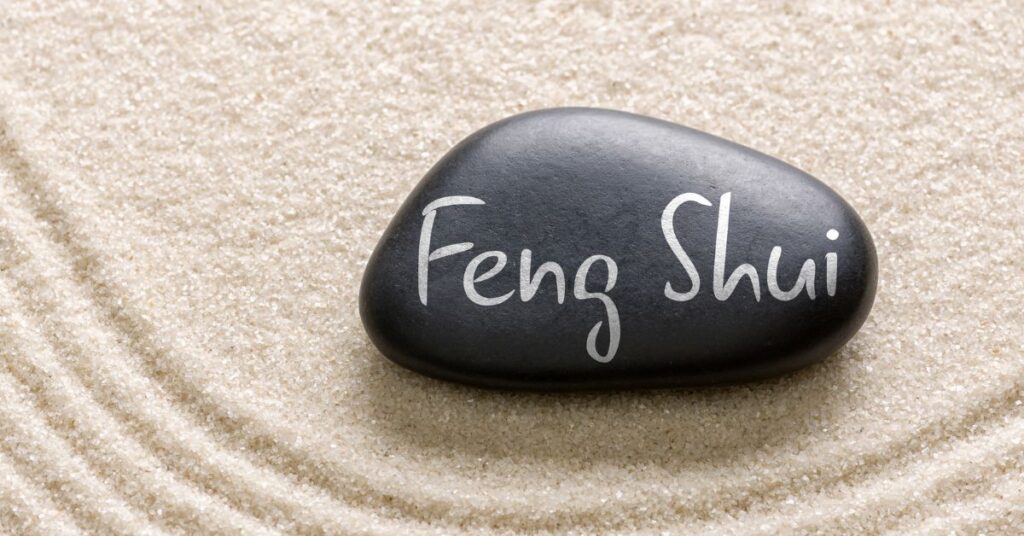
Understanding the Foundations of Feng Shui
The Philosophy Behind Feng Shui
Feng shui is rooted in the ancient Chinese understanding that everything in the universe is connected through energy, or “chi” (also spelled “qi”). This life force energy flows through all things, including your home, and the quality of this flow directly affects your health, happiness, and success in life.
The goal of feng shui is to create environments where chi can flow smoothly and beneficially, while removing obstacles that might cause energy to become stagnant, rush too quickly, or flow in harmful directions. When chi flows optimally through your space, it supports and enhances every aspect of your life.
The Concept of Chi (Life Force Energy)
Chi is the fundamental concept underlying all feng shui practice. This invisible energy is constantly moving and changing, and it can be influenced by the arrangement of objects, colors, shapes, and materials in your environment.
Positive Chi Characteristics:
•Flows smoothly and gently through spaces
•Feels fresh, vibrant, and alive
•Supports health, happiness, and prosperity
•Creates feelings of peace and well-being
Negative Chi Characteristics:
•Moves too quickly or becomes stagnant
•Feels heavy, oppressive, or chaotic
•Can drain energy and create obstacles
•May contribute to stress, illness, or bad luck
Understanding how to recognize and work with chi is the foundation of successful feng shui practice. As you learn to sense the energy in your spaces, you’ll develop an intuitive understanding of what arrangements feel harmonious and supportive.
Yin and Yang: The Balance of Opposites
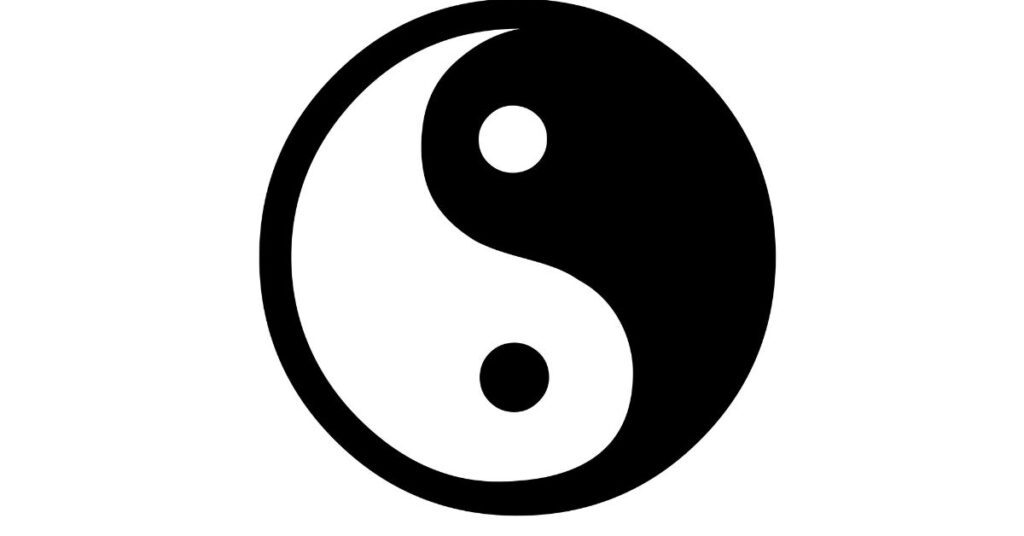
Central to feng shui philosophy is the concept of yin and yang—the complementary forces that exist in all things. Yin represents feminine, passive, cool, and dark qualities, while yang represents masculine, active, warm, and bright qualities.
Yin Qualities in the Home:
•Soft textures and curved lines
•Cool colors like blues and greens
•Quiet, restful spaces
•Dim or soft lighting
•Water features and flowing elements
Yang Qualities in the Home:
•Hard surfaces and angular shapes
•Warm colors like reds and oranges
•Active, energetic spaces
•Bright lighting
•Fire elements and upward-moving energy
The key to good feng shui is creating balance between yin and yang energies. Different rooms require different balances—bedrooms benefit from more yin energy for rest and relaxation, while home offices need more yang energy for productivity and focus.
The Five Elements Theory

Feng shui recognizes five fundamental elements that interact with each other in specific ways: Wood, Fire, Earth, Metal, and Water. Each element has its own characteristics, colors, shapes, and materials, and understanding how they work together is crucial for creating balanced spaces.
Wood Element:
•Qualities: Growth, creativity, flexibility, new beginnings
•Colors: Green, brown
•Shapes: Rectangular, columnar
•Materials: Wood, plants, paper, cotton
•Best Locations: East and Southeast areas
Fire Element:
•Qualities: Energy, passion, transformation, recognition
•Colors: Red, orange, pink, purple
•Shapes: Triangular, pointed
•Materials: Candles, lights, leather, wool
•Best Locations: South area
Earth Element:
•Qualities: Stability, nourishment, grounding, relationships
•Colors: Yellow, beige, brown, earth tones
•Shapes: Square, flat, horizontal
•Materials: Clay, ceramics, stone, crystals
•Best Locations: Center, Southwest, Northeast areas
Metal Element:
•Qualities: Precision, efficiency, clarity, helpful people
•Colors: White, gray, metallic colors
•Shapes: Round, oval, arched
•Materials: Metal, minerals, stones
•Best Locations: West and Northwest areas
Water Element:
•Qualities: Wisdom, intuition, flow, career success
•Colors: Black, dark blue, navy
•Shapes: Wavy, irregular, flowing
•Materials: Glass, mirrors, water features
•Best Locations: North area
Element Cycles: How Elements Interact
The five elements interact through two main cycles that are essential to understand for effective feng shui application:
Productive Cycle (Supporting):
•Water nourishes Wood
•Wood feeds Fire
•Fire creates Earth (ash)
•Earth produces Metal
•Metal collects Water
Destructive Cycle (Controlling):
•Water extinguishes Fire
•Fire melts Metal
•Metal cuts Wood
•Wood depletes Earth
•Earth absorbs Water
When arranging your spaces, you want to create supportive element relationships while avoiding destructive combinations. For example, placing a large water feature (Water element) in the South area of your home (Fire element) would create a destructive relationship that could negatively impact recognition and reputation.
The Bagua Map: Your Guide to Energy Zones
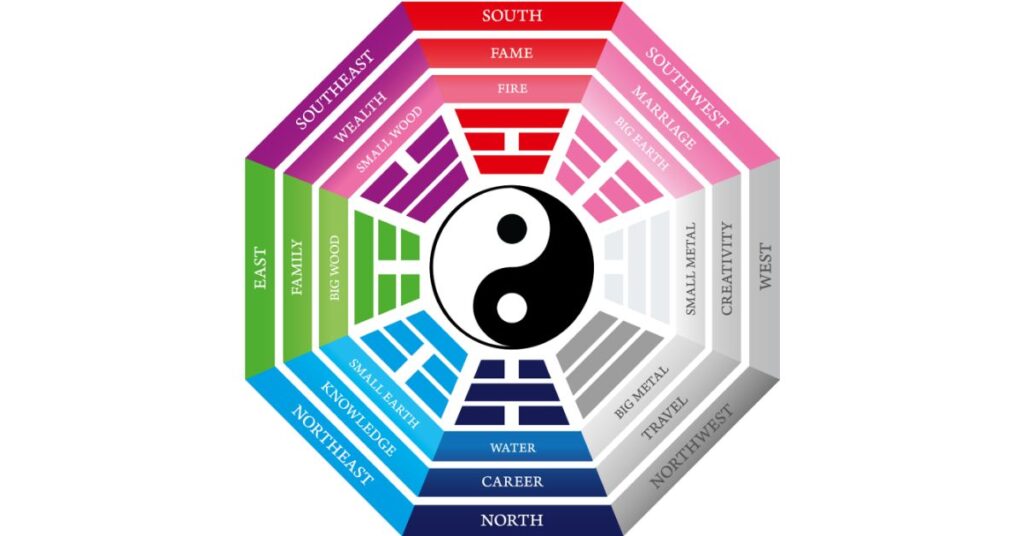
Understanding the Bagua
The Bagua (pronounced “bah-gua”) is one of the most important tools in feng shui practice. This octagonal map divides any space into nine areas, each corresponding to a different aspect of life. By understanding which areas of your home relate to which life aspects, you can make targeted improvements to enhance specific areas of your experience.
The Nine Bagua Areas:
1.Career and Life Path (North) – Water element
2.Knowledge and Self-Cultivation (Northeast) – Earth element
3.Family and Health (East) – Wood element
4.Wealth and Prosperity (Southeast) – Wood element
5.Fame and Reputation (South) – Fire element
6.Love and Relationships (Southwest) – Earth element
7.Children and Creativity (West) – Metal element
8.Helpful People and Travel (Northwest) – Metal element
9.Health and Center (Center) – Earth element
How to Apply the Bagua to Your Home
There are two main methods for applying the Bagua map to your living space:
Method 1: Compass Method Using an actual compass, align the Bagua map with the true directional orientation of your home. The Career area always corresponds to true North, regardless of where your front door is located.
Method 2: Front Door Method Align the Bagua map so that the front door of your home falls in either the Knowledge, Career, or Helpful People areas (the bottom three sections). This method is often easier for beginners and works well for most homes.
Enhancing Each Bagua Area
Career and Life Path (North/Water):
•Colors: Black, dark blue, navy
•Elements: Water features, mirrors, glass
•Enhancements: Flowing water fountain, career-related artwork, symbols of your profession
•Avoid: Earth elements (plants, crystals) that can muddy water energy
Knowledge and Self-Cultivation (Northeast/Earth):
•Colors: Blue, green, black (for knowledge), earth tones
•Elements: Books, educational materials, crystals
•Enhancements: Library area, meditation space, spiritual symbols
•Avoid: Fire elements that can dry out earth energy
Family and Health (East/Wood):
•Colors: Green, brown, blue (water nourishes wood)
•Elements: Plants, wooden furniture, family photos
•Enhancements: Healthy plants, family portraits, wooden objects
•Avoid: Metal elements that can cut wood energy
Wealth and Prosperity (Southeast/Wood):
•Colors: Purple, gold, green, red (fire feeds wood)
•Elements: Plants, water features, symbols of abundance
•Enhancements: Healthy plants, water fountain, prosperity symbols
•Avoid: Metal elements that can deplete wealth energy
Fame and Reputation (South/Fire):
•Colors: Red, orange, pink, purple
•Elements: Lights, candles, fire-related objects
•Enhancements: Good lighting, awards, red objects, triangular shapes
•Avoid: Water elements that can extinguish fire energy
Love and Relationships (Southwest/Earth):
•Colors: Pink, red, white, earth tones
•Elements: Pairs of objects, romantic artwork, crystals
•Enhancements: Pairs of candles, romantic art, rose quartz crystals
•Avoid: Single objects or images that represent solitude
Children and Creativity (West/Metal):
•Colors: White, gray, metallic, pastels
•Elements: Metal objects, creative artwork, children’s items
•Enhancements: Metal frames, creative projects, children’s artwork
•Avoid: Fire elements that can melt metal energy
Helpful People and Travel (Northwest/Metal):
•Colors: White, gray, black, metallic
•Elements: Metal objects, travel photos, spiritual figures
•Enhancements: Travel pictures, mentor photos, metal wind chimes
•Avoid: Fire elements that can weaken metal energy
Health and Center (Center/Earth):
•Colors: Yellow, earth tones, warm colors
•Elements: Crystals, ceramics, square shapes
•Enhancements: Central gathering space, healthy plants, earth-toned decor
•Avoid: Wood elements that can deplete earth energy
Room-by-Room Feng Shui Guide
The Entryway: Your Home’s First Impression
The entryway is crucial in feng shui because it’s where energy first enters your home. A well-designed entrance welcomes positive chi while filtering out negative energy.
Essential Entryway Principles:
Clear and Unobstructed Path: Ensure your front door can open fully without hitting anything. Remove shoes, coats, and clutter that might block the flow of energy. The path to your door should be clear and inviting.
Good Lighting: Adequate lighting is essential for attracting positive energy. If your entryway is dark, add lamps, overhead lighting, or even solar lights outside to brighten the space.
Welcoming Elements: Place a beautiful doormat, healthy plants, or attractive decorations near your entrance to create a welcoming atmosphere. These elements signal to both visitors and energy that this is a positive space.
Mirror Placement: Mirrors can expand small entryways and reflect positive energy, but avoid placing mirrors directly facing the front door, as this can push energy back out of your home.
Color Considerations: Choose colors that correspond to the Bagua area where your front door is located. For example, if your door is in the Career area (North), consider blues or blacks.
Living Room: The Heart of Social Energy
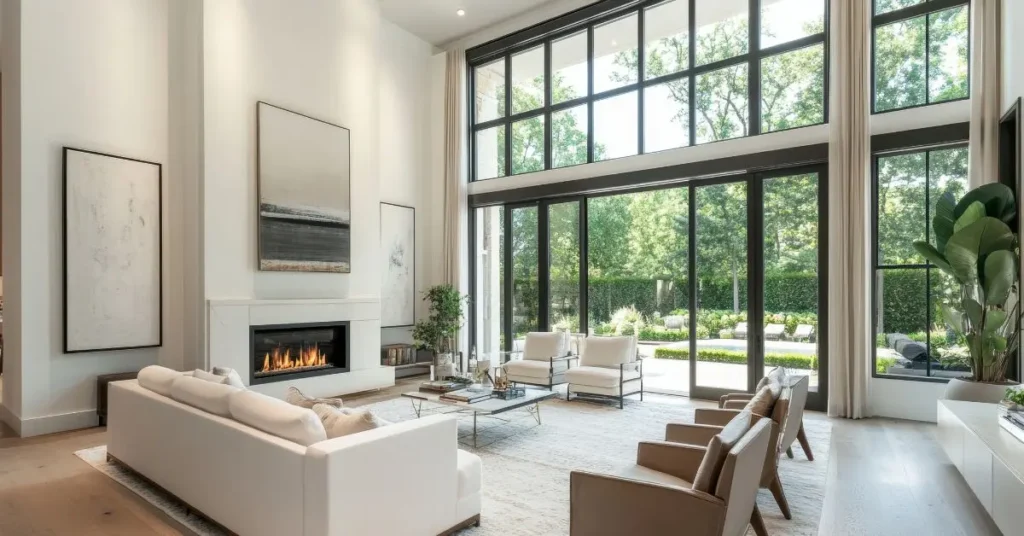
The living room is where family and friends gather, making it crucial for relationship harmony and social energy.
Furniture Arrangement:
Command Position: Arrange seating so that the main sofa or chairs face the entrance to the room while having a solid wall behind them. This creates a sense of security and control.
Conversation Circles: Create intimate conversation areas by arranging furniture in circular or octagonal patterns rather than pushing everything against the walls.
Traffic Flow: Ensure clear pathways through the room so energy can flow smoothly. Avoid arrangements that force people to walk around furniture or squeeze through tight spaces.
Element Balance:
Wood Elements: Coffee tables, bookshelves, plants Fire Elements: Fireplace, candles, red accents, good lighting Earth Elements: Ceramic vases, earth-toned pillows, square ottomans Metal Elements: Picture frames, decorative bowls, round side tables Water Elements: Small fountain, blue accents, wavy patterns
Color Harmony: Choose colors that support the room’s Bagua area while creating a balanced, welcoming atmosphere. Warm colors promote social interaction, while cool colors create calm relaxation.
Kitchen: Nourishing Body and Prosperity
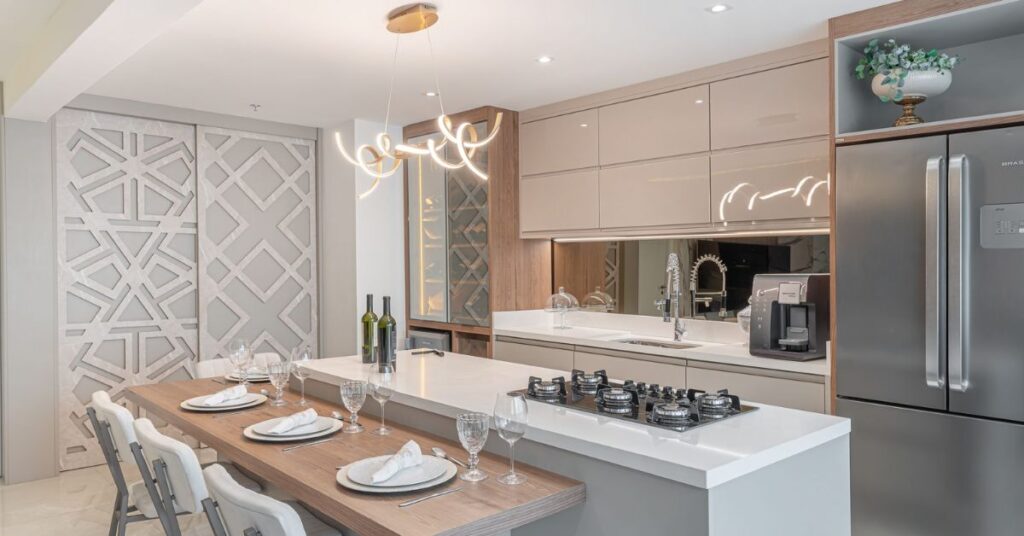
In feng shui, the kitchen represents nourishment and wealth, making its arrangement crucial for both health and financial well-being.
Stove Placement and Care:
Command Position for Cook: The stove should be positioned so the cook can see the entrance while cooking, but not be directly in line with the door. If this isn’t possible, place a mirror behind the stove to provide visibility.
Clean and Functional: Keep your stove clean and in good working order. All burners should function properly, as they represent your ability to create wealth and nourishment.
Separate Elements: Avoid placing the stove (Fire element) directly next to the sink or refrigerator (Water elements), as this creates elemental conflict. If they must be adjacent, place a small plant or wooden cutting board between them.
Storage and Organization:
Clutter-Free Counters: Keep countertops clear of unnecessary items to allow energy to flow freely. Store appliances in cabinets when not in use.
Full Pantry: A well-stocked pantry and refrigerator symbolize abundance and security. Even if you don’t cook often, keep basic staples on hand.
Sharp Objects: Store knives and sharp objects in drawers or knife blocks rather than leaving them visible, as they can create aggressive energy.
Colors and Materials: Earth tones, warm yellows, and natural materials work well in kitchens. Avoid too much red (overstimulating) or blue (cooling to appetite).
Bedroom: Sanctuary for Rest and Romance
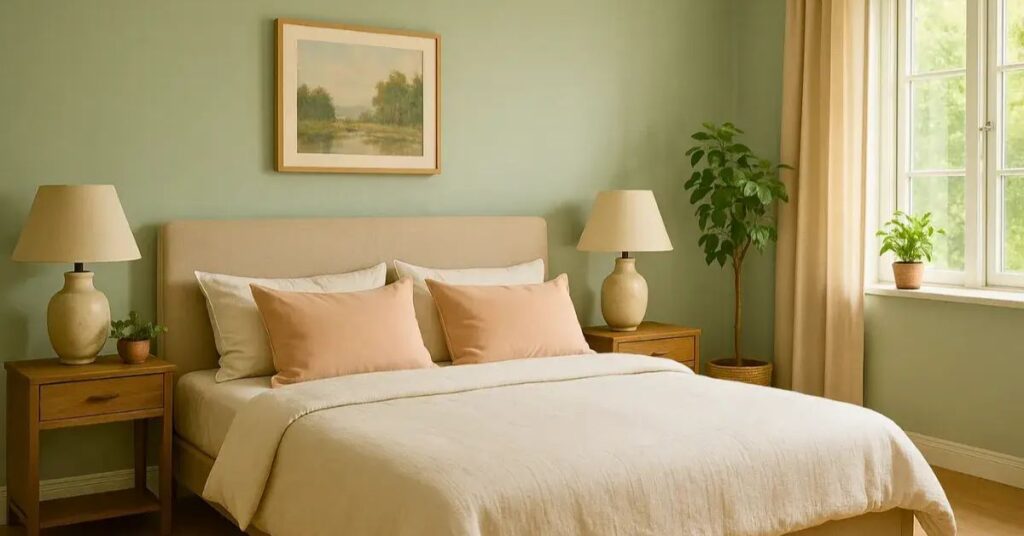
The bedroom is your most personal space and should be optimized for rest, relaxation, and romantic energy.
Bed Placement:
Command Position: Position your bed so you can see the door while lying down, but not be directly in line with it. The bed should have a solid wall behind the headboard for support and security.
Space on Both Sides: Ensure equal space on both sides of the bed to promote balance in relationships. This applies even if you’re single, as it leaves room for a partner to enter your life.
Under-Bed Storage: Keep the area under your bed clear of clutter to allow energy to flow freely around you while you sleep. If you must store items under the bed, choose soft items like linens rather than hard objects.
Creating Romantic Energy:
Pairs of Objects: Use pairs of nightstands, lamps, and decorative objects to symbolize partnership and balance.
Soft, Sensual Materials: Choose soft fabrics, curved lines, and sensual textures to create a romantic atmosphere.
Appropriate Artwork: Display images that represent love, beauty, and happiness. Avoid single figures, sad or aggressive images, or pictures of family members.
Color and Lighting:
Yin Colors: Soft, muted colors promote rest and relaxation. Consider pale pinks, soft blues, gentle greens, or warm earth tones.
Adjustable Lighting: Install dimmer switches or use lamps with soft bulbs to create adjustable lighting for different moods and activities.
Electronic Considerations: Minimize electronics in the bedroom, especially near the bed. If you must have a TV or computer, cover them when not in use to reduce electromagnetic interference with sleep.
Home Office: Productivity and Success
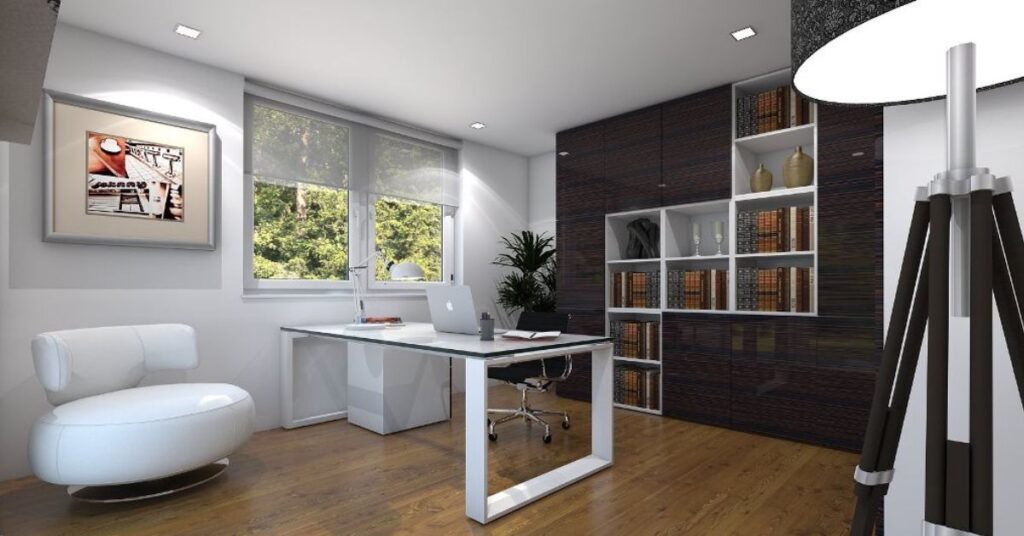
Whether you work from home or just need a space for managing household affairs, your office setup can significantly impact your productivity and career success.
Desk Placement:
Command Position: Position your desk so you face the door while working, with a solid wall behind you for support. This arrangement promotes confidence and allows you to see opportunities coming.
Natural Light: If possible, position your desk to take advantage of natural light, but avoid having your back to a window, which can create instability.
Clutter-Free Workspace: Keep your desk organized and free of unnecessary items. A cluttered desk creates mental confusion and blocks productive energy.
Success Symbols:
Career Enhancements: Display items that represent your career goals, such as awards, diplomas, or symbols of your profession.
Wealth Corner: Enhance the Southeast corner of your office with symbols of prosperity, such as a small plant, a bowl of coins, or a prosperity crystal.
Inspiration Board: Create a vision board or display inspirational quotes and images that motivate you toward your goals.
Element Balance:
•Wood: Plants, wooden desk, green accents for growth
•Fire: Good lighting, red accents for recognition
•Earth: Crystals, earth tones for stability
•Metal: Filing cabinets, white/gray colors for efficiency
•Water: Small fountain, blue accents for wisdom
Bathroom: Cleansing and Renewal
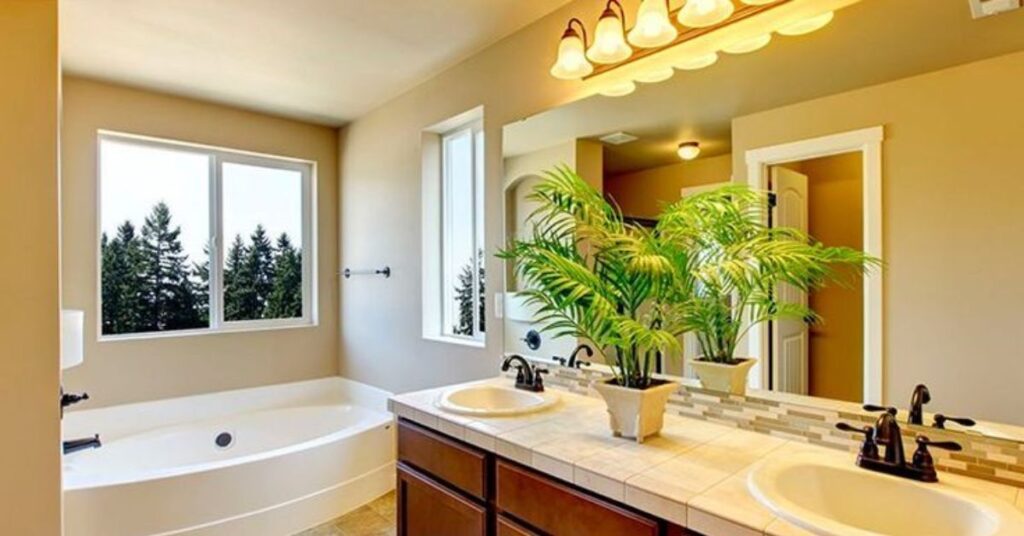
While often overlooked, bathrooms play important roles in feng shui as spaces of cleansing and renewal.
Drain Considerations:
Keep Drains Closed: Always keep toilet lids down and sink/shower drains closed when not in use to prevent positive energy from flowing away.
Bathroom Door: Keep the bathroom door closed to contain water energy and prevent it from affecting other areas of the house.
Plants and Life: Add plants or fresh flowers to bring life energy into this space of elimination. Choose plants that thrive in humid conditions.
Cleanliness and Order:
Spotless Surfaces: Keep bathrooms exceptionally clean, as stagnant water energy can become negative quickly.
Good Ventilation: Ensure adequate ventilation to prevent moisture buildup and maintain fresh energy circulation.
Quality Materials: Use high-quality materials and fixtures when possible, as the bathroom represents your relationship with self-care and personal value.
Color and Decoration: Light, fresh colors work best in bathrooms. Consider whites, soft blues, or pale greens. Add artwork or decorations that make you feel pampered and cared for.
Common Feng Shui Mistakes and How to Avoid Them
Clutter: The Number One Energy Blocker
The Problem: Clutter is the most common and destructive feng shui mistake. It blocks the flow of positive energy, creates mental confusion, and can trap negative energy in your space.
Common Clutter Areas:
•Entryways blocked with shoes, coats, and mail
•Kitchen counters covered with appliances and papers
•Bedroom floors littered with clothes and personal items
•Home offices buried under stacks of documents and supplies
The Solution: Implement a systematic decluttering approach:
1.Start Small: Choose one drawer or small area to declutter completely
2.Use the Three-Box Method: Sort items into Keep, Donate, and Trash boxes
3.Apply the One-Year Rule: If you haven’t used something in a year, consider letting it go
4.Create Designated Homes: Every item should have a specific place where it belongs
5.Maintain Daily: Spend 10 minutes each day putting things back in their designated places
Broken Items: Symbols of Stagnation
The Problem: Broken or non-functioning items represent stagnant or blocked energy in your life. They can symbolically prevent progress and success in corresponding life areas.
Common Broken Items:
•Burnt-out light bulbs (blocking clarity and recognition)
•Stopped clocks (preventing forward movement in time)
•Broken appliances (hindering productivity and efficiency)
•Cracked mirrors (distorting self-image and reflection)
•Dead plants (representing declining life force)
The Solution:
•Immediate Repair: Fix broken items as soon as possible
•Replace When Necessary: If repair isn’t feasible, replace the item promptly
•Remove Completely: If you can’t repair or replace, remove the broken item entirely
•Regular Maintenance: Perform monthly checks to identify and address issues quickly
Sharp Corners and Aggressive Angles
The Problem: Sharp corners and aggressive angles create “poison arrows” or “sha chi”—negative energy that can cause discomfort, stress, and obstacles in life.
Common Sources:
•Sharp furniture corners pointing at seating areas
•Exposed ceiling beams over beds or desks
•Long, straight hallways that channel energy too quickly
•Angular furniture arrangements that create harsh lines
The Solution:
•Soften Corners: Use plants, fabric draping, or rounded furniture to soften sharp edges
•Redirect Energy: Place crystals, plants, or decorative objects to deflect harsh energy
•Choose Curved Furniture: Opt for rounded or oval furniture when possible
•Create Gentle Pathways: Use furniture placement to create curved, meandering paths through rooms
Mirror Misplacement
The Problem: Mirrors are powerful feng shui tools, but incorrect placement can create problems rather than solutions.
Common Mirror Mistakes:
•Mirrors facing the front door (pushing energy back out)
•Mirrors reflecting the bed (creating restless energy for sleep)
•Mirrors reflecting toilets (amplifying elimination energy)
•Broken or cloudy mirrors (distorting energy reflection)
The Solution:
•Strategic Placement: Use mirrors to reflect beautiful views or expand small spaces
•Avoid Direct Reflections: Don’t place mirrors where they reflect beds, toilets, or front doors
•Keep Clean: Regularly clean mirrors to maintain clear energy reflection
•Choose Quality: Invest in high-quality mirrors that provide clear, undistorted reflections
Ignoring Natural Light and Air Quality

The Problem: Poor lighting and air quality create stagnant, unhealthy energy that can affect both physical and mental well-being.
Common Issues:
•Dark rooms with inadequate lighting
•Stuffy spaces with poor ventilation
•Artificial lighting that’s too harsh or too dim
•Windows that are never opened for fresh air
The Solution:
•Maximize Natural Light: Keep windows clean and unobstructed
•Layer Lighting: Use multiple light sources at different levels
•Improve Air Quality: Open windows regularly, use air purifiers, add plants
•Full-Spectrum Bulbs: Choose lighting that mimics natural sunlight when possible
Advanced Feng Shui Techniques
Flying Star Feng Shui
Flying Star is an advanced feng shui technique that considers the time element in addition to space. This system recognizes that energy patterns change over time, and what works in one period may not work in another.
Basic Concepts:
•20-Year Periods: Major energy shifts occur every 20 years
•Annual Stars: Energy patterns change each year
•Monthly Stars: More subtle changes occur monthly
•Natal Chart: Each building has a unique energy chart based on its construction date
Practical Application: While Flying Star analysis requires advanced study, beginners can benefit from understanding that feng shui is not static. What works in your space may need adjustment over time as energy patterns shift.
Compass School Feng Shui
This traditional approach uses precise compass directions to determine the most auspicious arrangements for individuals based on their birth dates.
Personal Directions: Each person has four favorable and four unfavorable directions based on their birth year and gender. These directions can be used for:
•Sleeping Direction: Orient your bed so your head points toward a favorable direction
•Working Direction: Face a favorable direction while working
•Eating Direction: Sit facing a favorable direction during meals
Calculating Your Directions: While the calculations are complex, many online calculators can help you determine your personal favorable directions based on your birth date.
Form School Feng Shui
This approach focuses on the physical forms and shapes in the environment, both inside and outside your home.
External Considerations:
•Mountain and Water: Ideal locations have mountains behind (support) and water in front (opportunity)
•Neighboring Buildings: Consider how surrounding structures affect your home’s energy
•Street Patterns: Curved streets are preferable to straight streets that channel energy too quickly
•Natural Features: Trees, hills, and water features all influence your home’s feng shui
Internal Applications:
•Room Shapes: Regular shapes (square, rectangular) are preferable to irregular shapes
•Ceiling Heights: Consistent ceiling heights create stable energy flow
•Doorway Alignments: Avoid having multiple doors in direct alignment, which can cause energy to rush through
Color Psychology in Feng Shui
Understanding the psychological and energetic effects of color can help you make more informed decorating decisions.
Warm Colors (Yang Energy):
•Red: Stimulating, passionate, can increase energy but may be overwhelming in large amounts
•Orange: Cheerful, social, good for gathering spaces but can be too stimulating for bedrooms
•Yellow: Uplifting, intellectual, promotes communication and learning
Cool Colors (Yin Energy):
•Blue: Calming, peaceful, good for bedrooms and meditation spaces
•Green: Balancing, healing, represents growth and renewal
•Purple: Spiritual, luxurious, can enhance meditation and spiritual practices
Neutral Colors:
•White: Clean, pure, can feel cold if overused
•Gray: Sophisticated, calming, but can feel depressing in excess
•Brown: Grounding, stable, connects to earth energy
•Black: Powerful, mysterious, should be used sparingly as accents
Seasonal Feng Shui Adjustments
Just as nature changes with the seasons, your home’s feng shui can benefit from seasonal adjustments.
Spring (Wood Element Season):
•Add fresh flowers and new plants
•Incorporate more green colors
•Open windows for fresh air
•Focus on the East and Southeast areas of your home
Summer (Fire Element Season):
•Increase lighting throughout your home
•Add red, orange, or pink accents
•Enhance the South area with fire element items
•Create more active, social spaces
Autumn (Metal Element Season):
•Incorporate white, gray, or metallic colors
•Add metal decorative objects
•Focus on the West and Northwest areas
•Create more organized, efficient spaces
Winter (Water Element Season):
•Add blue or black accents
•Incorporate water features or mirrors
•Focus on the North area of your home
•Create cozy, contemplative spaces
Integrating Feng Shui with Modern Living
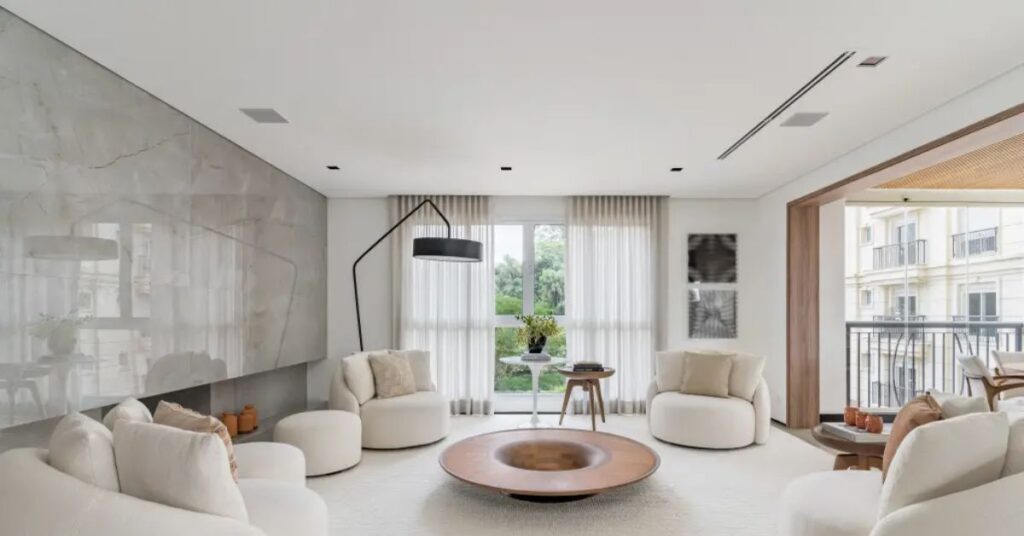
Technology and Feng Shui
Modern homes are filled with electronic devices that can affect energy flow. Here’s how to integrate technology mindfully:
Electromagnetic Fields (EMFs):
•Keep electronic devices away from beds and meditation areas
•Use EMF-reducing plants like snake plants or peace lilies
•Turn off Wi-Fi routers at night when possible
•Create tech-free zones in bedrooms and dining areas
Smart Home Integration:
•Use smart lighting to adjust brightness and color temperature throughout the day
•Program thermostats to maintain comfortable temperatures that support good energy flow
•Use smart speakers to play calming music or nature sounds
•Automate window coverings to maximize natural light
Home Office Technology:
•Position computer screens to avoid glare and eye strain
•Use ergonomic furniture to support physical health
•Incorporate plants to offset electromagnetic energy
•Take regular breaks from screens to maintain mental clarity
Feng Shui for Renters
You don’t need to own your home to benefit from feng shui principles. Here are renter-friendly approaches:
Temporary Modifications:
•Use removable wallpaper or wall decals to add color and pattern
•Rearrange furniture to create better energy flow
•Add plants, artwork, and decorative objects to enhance specific areas
•Use area rugs to define spaces and add color
Portable Enhancements:
•Invest in quality lighting that you can take with you
•Choose furniture pieces that work in multiple spaces
•Build a collection of feng shui objects (crystals, plants, artwork) that travel with you
•Focus on organization and cleanliness, which cost nothing but create immediate improvements
Working with Limitations:
•If you can’t paint walls, use colorful artwork and textiles
•If you can’t modify lighting fixtures, use lamps and candles
•If you can’t change flooring, use rugs to alter the energy
•Focus on what you can control rather than what you can’t
Feng Shui on a Budget
Creating good feng shui doesn’t require expensive purchases. Many of the most effective techniques cost little or nothing:
Free Feng Shui Improvements:
•Declutter and organize your existing belongings
•Rearrange furniture for better energy flow
•Clean windows to maximize natural light
•Open windows regularly for fresh air circulation
•Use what you already own in new ways
Low-Cost Enhancements:
•Add plants from cuttings or seeds
•Create artwork using natural materials
•Use candles for better lighting and ambiance
•Rearrange books and decorative objects
•Make simple repairs to broken items
Investment Priorities: When you do have money to spend, prioritize:
1.Good lighting – affects every aspect of your space
2.Quality bedding – supports rest and relationships
3.Plants – bring life energy and improve air quality
4.Organization systems – help maintain clutter-free spaces
5.One beautiful mirror – can transform and expand any space
Maintaining Your Feng Shui Practice
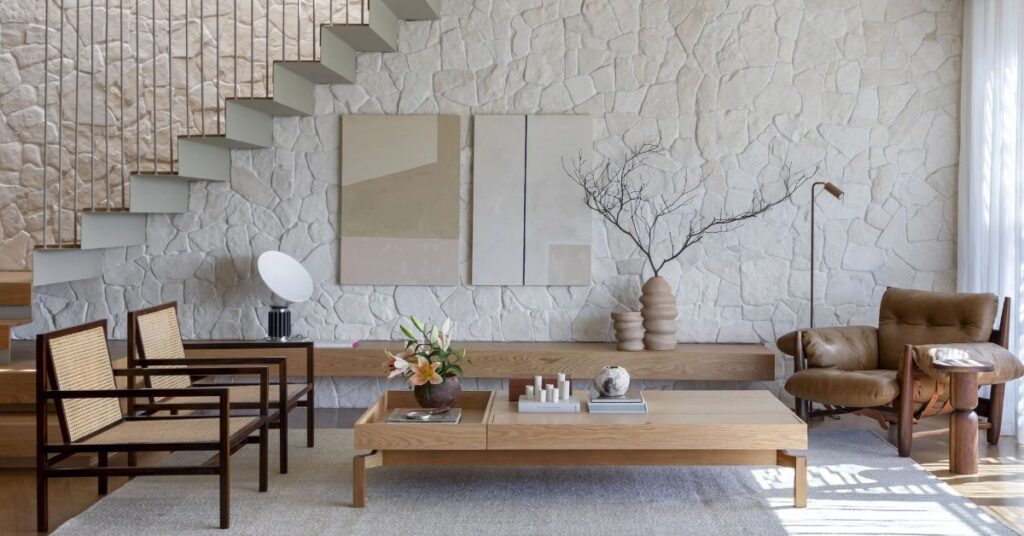
Creating Sustainable Habits
Good feng shui is not a one-time arrangement but an ongoing practice. Here’s how to maintain positive energy in your home:
Daily Practices:
•Make your bed each morning to start the day with intention
•Spend 10 minutes tidying up before bed
•Open windows for fresh air circulation
•Light a candle or incense to refresh energy
•Express gratitude for your home and its shelter
Weekly Routines:
•Deep clean one room thoroughly
•Water plants and remove any dead leaves or flowers
•Rearrange one small area to refresh energy
•Check and replace any burnt-out light bulbs
•Assess clutter accumulation and address problem areas
Monthly Assessments:
•Walk through your home and notice how each area feels
•Rotate seasonal decorations and colors
•Evaluate and adjust furniture arrangements
•Clean mirrors and windows for clear energy reflection
•Review and update your feng shui goals
Seasonal Adjustments:
•Perform deep cleaning and decluttering
•Adjust colors and decorations for the season
•Reassess and refresh plant arrangements
•Update lighting for changing daylight patterns
•Set new intentions for the coming season
Developing Your Intuitive Sense
While feng shui has specific principles and guidelines, developing your intuitive sense of energy is equally important:
Energy Awareness Exercises:
•Spend time in different areas of your home and notice how they feel
•Pay attention to your mood and energy levels in various rooms
•Notice which spaces you naturally gravitate toward or avoid
•Observe how different arrangements affect your feelings
•Trust your first impressions when entering a space
Meditation and Mindfulness:
•Practice meditation in different areas of your home
•Use mindful breathing to sense energy in spaces
•Pay attention to how your body responds to different environments
•Notice the difference between spaces before and after feng shui adjustments
Continuing Your Feng Shui Education
Feng shui is a rich and complex practice with many schools and approaches. Here are ways to deepen your understanding:
Recommended Resources:
•Books: “The Western Guide to Feng Shui” by Terah Kathryn Collins, “Interior Design with Feng Shui” by Sarah Rossbach
•Online Courses: Many feng shui masters offer online training programs
•Local Classes: Check community centers and metaphysical shops for local classes
•Professional Consultations: Consider hiring a feng shui consultant for complex situations
Reputable External Resources: For additional learning and validation of feng shui principles, consider exploring resources from the International Feng Shui Guild (https://www.ifsguild.org), which provides educational materials and certified practitioner directories.
Practice and Experimentation:
•Start with small changes and observe their effects
•Keep a journal of your feng shui experiments and results
•Share experiences with friends and family who practice feng shui
•Be patient with the process—energy shifts can take time to manifest
Your Journey to Harmonious Living
Feng shui is much more than interior decorating or furniture arrangement—it’s a holistic approach to creating living spaces that support your highest potential and deepest well-being. By understanding and applying these ancient principles, you’re not just changing how your home looks; you’re transforming how it feels and how it supports your life journey.
Remember that feng shui is both an art and a science. While there are established principles and guidelines, the most important element is your own intuitive sense of what feels right in your space. Trust your instincts, start with small changes, and be patient with the process. Energy shifts can take time to manifest, but the results are often profound and lasting.
As you begin implementing these feng shui principles, you may notice improvements in various areas of your life—better sleep, enhanced relationships, increased prosperity, or simply a greater sense of peace and well-being in your home. These changes occur because your environment is now supporting rather than hindering your natural energy and life force.
Your home is your sanctuary, your retreat from the world, and your launching pad for all your dreams and aspirations. When it’s arranged according to feng shui principles, it becomes a powerful ally in creating the life you desire. Every room becomes a tool for transformation, every arrangement an opportunity for enhancement, and every day a chance to live in greater harmony with your environment.
The journey of feng shui is ongoing and ever-evolving. As your life changes, your space can change with you, always supporting your current needs and future goals. Embrace this ancient wisdom, trust the process, and enjoy creating a home that truly nurtures your body, mind, and spirit.
For comprehensive energy clearing techniques that complement your feng shui practice, including sage smudging, crystal protection, and other powerful methods to maintain positive energy in your harmoniously arranged space, explore our Complete Guide to Energy Cleansing: Transform Your Space into a Sanctuary of Peace and Prosperity.
